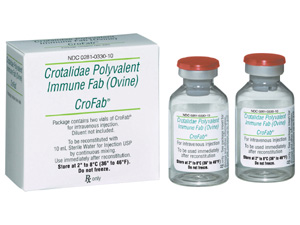Background
Rattlesnake Venom is handled in a particular life science manufacturing facility in Co. Cork. There are four types of venom which vary in toxicity from 2.6 – 73ug. Venom is derived from Cotton Mouth, Mojave, Eastern Diamondback, Western Diamondback Rattlesnake species. (No snakes are handled at this Cork facility).
The venom is proteolytic therefore digests/destroys blood/tissue at a molecular level. The symptoms of envenomation may vary. If inner body exposure of venom is left untreated it may be fatal in 20% of cases. Dependant on the dose and size/weight/health of the victim, death can occur within 6-48 hours.
Similarly the venom is toxic with direct contact with the eyes or mucous membrane. It is also an irritant and sensitising agent if inhaled causing allergic reactions (case specific).
The toxins themselves consist of a variety of:
- Pro-coagulants, anticoagulants
- Cardiocoagulants
- Haemotoxins
- Necrotoxins, neurotoxins
Effects can range from no apparent clinical effects or local effects at the exposure site to life-threatening effects that can affect every major organ in the body. Effects may begin within minutes or be delayed for hours, with the more severe effects not becoming evident for many hours.
Locally active toxins may show clinical effects almost immediately.
Toxins with extravascular targets, such as neurotoxins and myotoxins, generally have a more delayed onset.
Regardless, all envenomations have effects in three critical and potentially life- or limb-threatening areas in common as follows:
Clinical
Local
Pain and local soft tissue damage are the first symptoms of envenomation. Necrotoxins may commence clinical effects almost immediately post bite/exposure, resulting in tissue digestion and vascular permeability.
Oedema
- Is produced by the permeable vessels, caused by venom, allowing fluid and blood to extravasate
- Is the first objective sign of envenomation and should trigger full attention
- Can progress to become profound enough to cause hypovolaemic shock
- Decreases slowly with treatment, which makes it a poor indicator of clinical improvement
- Creates skin problems relative to the extent of the oedema – Skin loses elasticity, stretches, and fissures. Generally superficial, fissures can be sources of secondary infection
Ecchymosis
- May occur with oedema
- May indicate, by speed of its progression, the severity of envenomation
- Caused by bleeding into skin due to coagulopathy induced by envenomation
Vesiculations and Bullae
- May be filled with clear serous fluid (vesicles) or with blood (bullae)
- Usually develop in the bite area but may be seen over the entire extremity
Systemic
- Headache
- Vomiting, abdominal pain, diarrhoea
- Syncope, convulsions
- Metallic or minty taste (likely = metalloproteinases in venom)
Neurotoxin Paralysis
- Caused by pre- and/or post-synaptic neurotoxins
- Pre-synaptic paralysis usually involves terminal axon damage
- Reversal requires regeneration of axons (weeks or months>
- May take 1 to 12 hours to become evident
- Progressive, often 1st in cranial nerves (ptosis, ophthalmoplegia, dysarthria, ± dysphagia)
- Can lead to respiratory failure
Cardiac
- ↓ or ↑ BP
- ↓ or ↑ HR
Haemostatic
Coagulopathy is generally seen in moderate to severe envenomations. 3 basic syndromes are seen:
- Coagulopathy (insidious, startes with persistent bleeding from the bite wound)
- Bleeding gums, haematemesis, melaena, or haematuria
- Thrombotic tendency (unusual)
Antivenom (CroFab®)

A single supply of antivenom (CroFab®) is stored by the CUH pharmacy Dept which is specific for use in Crotalid venomous species (namely rattlesnakes, copperheads, pit vipers and cottonmouths/water moccasins).
Early use of Antivenom (within 6 hours of snakebite) is advised to prevent clinical deterioration and the occurrence of systemic coagulation abnormalities.
For 24-HOUR MEDICAL INFORMATION for use of CroFab: Telephone: 001-877-377-3784 (USA).
Full Prescribing Information: https://crofab.com.
Management
Possible Adverse Reaction to Antivenom (CroFab®)
The most common adverse events reported is studies are mild or moderate reactions involving the skin and appendages (primarily urticaria, rash, or pruritus), which occurred in 14 out of 42 patients. Three patients experienced a serious adverse event. Two patients had a severe allergic reaction (severe hives and a severe rash and pruritus) following treatment. One patient had a recurrent coagulopathy due to envenomation, which required rehospitalisation and additional antivenin administration. In clinical trials, recurrent coagulopathy, characterised by decreased fibrinogen, decreased platelets, and elevated prothrombin time, occurred in approximately half of the patients studied. Recurrent coagulopathy may persist for 1 to 2 weeks or more. Patients who experience coagulopathy due to snakebite should be monitored for recurrent coagulopathy for up to 1 week or longer. One patient discontinued CroFab® therapy due to an allergic reaction. Anaphylaxis and hypersensitivity reactions can occur, and patients should be monitored closely during treatment. Patients with allergies to papain, chymopapain, other papaya extracts, or the pineapple enzyme bromelain may also be at risk for an allergic reaction to CroFab®. CroFab® contains mercury in the form of ethyl mercury from thimerosal. The final product contains up to 30 mcg or approximately 0.03 mg of mercury per vial, which amounts to no more than 0.6 mg of mercury per dose (based on the maximum dose of 18 vials studied in clinical trials of CroFab®).
Links
- Antivenom website: http://www.crofab.com/
- Print (pdf) version above evenomation algorithm
- Patient treatment: http://www.crofab.com/documents/CroFab-Treatment_Algorithm.pdf